- About Ramapo
- Academics
- Admissions & Aid
- Student Life
- Athletics
- Alumni
- Arts & Community
- Quick Links
- Apply
- Visit
- Give
FYS Courses by Topic and Section ID 29-35
INTD 101-29 - Issues in Healthcare: Exploring a Career as a Medical Professional
Tuesdays & Fridays, 9:55 – 11:35 a.m.
CRN 40410
Dr. Mark Caselli
Adjunct Faculty
The first-year seminar course is designed for students who may be interested in pursuing a career as a medical professional. It will explore the many facets of the road to becoming a health care manager or provider and an advocate for global health. We will examine the political, ethical, moral, cultural, educational, and financial issues that affect the delivery of health care both in the United States and in many other countries in the world. Aspects of the Patient Protection and Affordable Care Act, physician assisted suicide, the opioid epidemic, the COVID-19 pandemic, and the social and cultural determinants of health will be explored with emphasis on how they affect our nation’s healthcare and the practice of medicine. This course will utilize lectures, student presentations, specially selected readings, and documentaries to assist in class discussions on medical and healthcare issues.
Peer Facilitators
INTD 101-30 - Exploring America's Regions
Tuesdays & Friday, 11:50 a.m.- 1:30 p.m.
CRN 41189
John Gronbeck-Tedesco
Professor of American Studies
This FYS course will examine the different cultural contours of America’s geographic regions. We will make sense of how Americans have long conceived of their country in regional terms: North, South, or Midwest, for example, or urban, suburban, and rural. What is New Jersey culture versus that of the Tristate or Northeast, for instance? Using interdisciplinary methods, we will explore how the nation embodies different cultural configurations: in folk music and hip-hop; in photography and landscape art; in movies and poetry; and in public memory, to name a few. More broadly, we will consider how distinct regionalisms gave rise to a United States of both common aspirations and deep differences among its residents.
Peer Facilitator
INTD 101-31 - Exploring Music
Tuesdays & Fridays, 11:50 a.m. – 1:30pm
CRN 41001
Frank Meegan
Adjunct Faculty
In this FYS section, students explore the diverse ways people engage with music and incorporate it into their lives. We consider different forms of musical practice, world-wide social contexts for music making, genres and traditions of music, and technology and media issues. Learning experiences focus on creative class participation, interaction and discussion, collaboration through in-class group work, research, writing and oral presentations, and projects. Throughout the class we will listen to and analyze recordings, perform music, describe and interpret music in diverse contexts, produce a musical recording, and research musical topics. The section is open to all students regardless of musical background or academic major. Students should be willing to learn about a wide range of musical genres and social contexts in the U.S. and throughout the world, and be prepared to work creatively with others. While no musicianship skill is required, there will be active music participation in class, including clapping, singing, and some occasional performance with instruments.
Peer Facilitator
INTD 101-32 - Arts, Health, and Well- Being: A Humanistic Approach
Tuesdays & Fridays, 11:50 a.m. – 1:30 p.m.
CRN 40411
Maria Lupo
Adjunct Faculty
The intersection of arts & health has been recognized as an area that goes well beyond the creative art therapies encompassing the areas of humanistic medicine (observation & listening skills), medical ethics, narrative medicine/reflective writing and lastly but critical to our students & aspiring health professionals the practice of self-care. The course will focus on all the above tailored especially for those who are interested in the health professions and how the arts play a part in our health and well-being. The class will explore the creative arts therapies, medical humanities, and their related fields.
Peer Facilitator
INTD 101-33 - Leadership and Management in the Arts
Mondays & Thursdays, 8:00 a.m. – 9:40am
CRN 40415
Karley Berrios
Adjunct Faculty
What went down before the curtain went up? This course takes you behind the scenes to explore the business and leadership decisions that bring live performances from a concept to the stage. Students will dive into key areas such as talent acquisition, budgeting, marketing, production planning, and more. Through real-world examples such as concerts, theatrical productions, and other live events, this course will emphasize transferable skills like project management, leadership, collaboration, and problem solving skills that students can take with them on their own career journey.
Peer Facilitator
INTD 101-34 - Stories: What, Why, and How
Tuesdays & Fridays, 1:45 – 3:25pm
CRN 40081
Monika Giacoppe
Associate Professor of Comparative World Literature
We live in a world saturated by story. From our dreams to the news we consume, from sport to song, we take in a lot through story. In this section, we will read, watch, and listen to some great stories: some true, some fiction. We will also learn about how stories work. How do our brains respond to stories, and how can we use this knowledge to craft stories that engage people in what we want to communicate? Students in this class will produce written and video versions of a short non-fiction story of their own. We will also consider the use of stories and storytelling in fields such as education, marketing, medicine, and sports.
Peer Facilitator
INTD 101-35 - Issues in Healthcare: Exploring a Career as a Medical Professional
Tuesdays & Fridays, 1:45 – 3:25 p.m.
CRN 40639
Dr. Mark Caselli
Adjunct Faculty
The first-year seminar course is designed for students who may be interested in pursuing a career as a medical professional. It will explore the many facets of the road to becoming a health care manager or provider and an advocate for global health. We will examine the political, ethical, moral, cultural, educational, and financial issues that affect the delivery of health care both in the United States and in many other countries in the world. Aspects of the Patient Protection and Affordable Care Act, physician assisted suicide, the opioid epidemic, the COVID-19 pandemic, and the social and cultural determinants of health will be explored with emphasis on how they affect our nation’s healthcare and the practice of medicine. This course will utilize lectures, student presentations, specially selected readings, and documentaries to assist in class discussions on medical and healthcare issues.
Peer Facilitators
Copyright ©2025 Ramapo College Of New Jersey. Statements And Policies. Contact Webmaster.
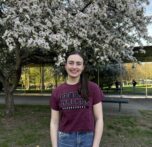
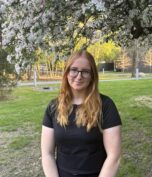
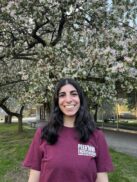
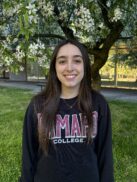
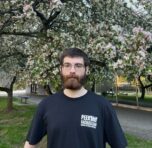
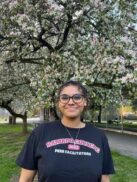
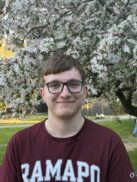


Follow Ramapo